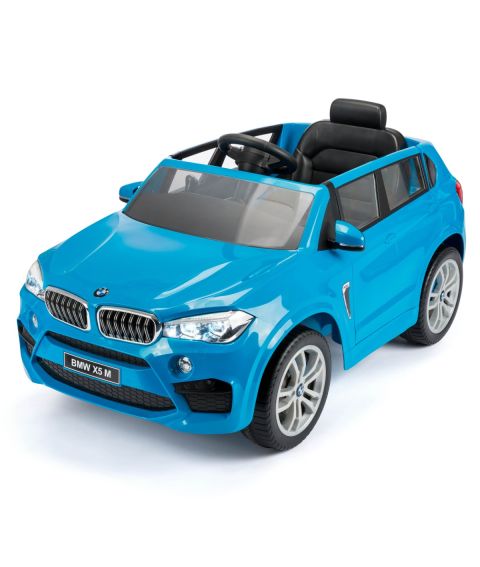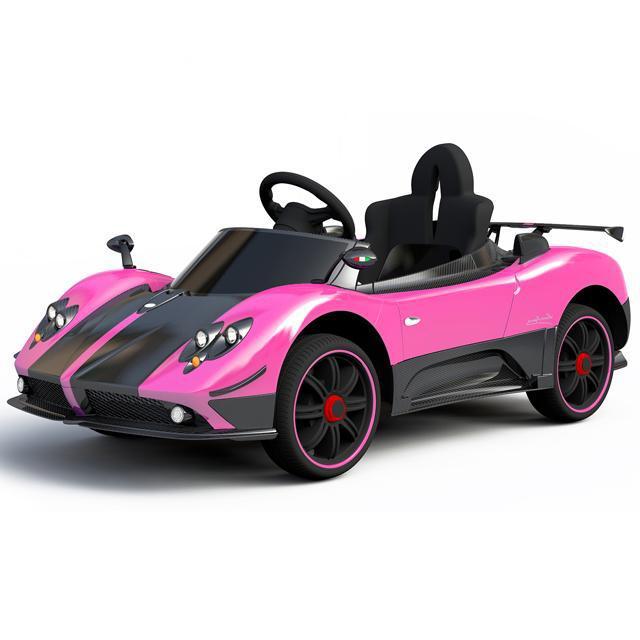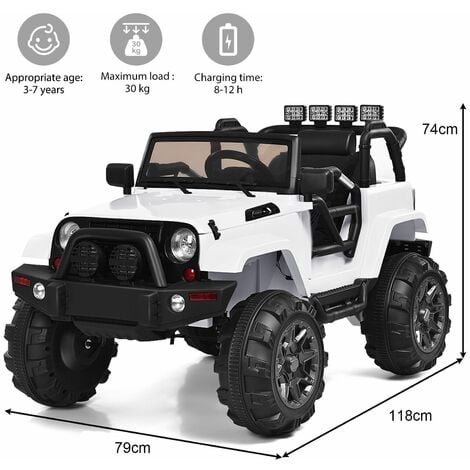New Reasons For Picking Kids Cars
New Reasons For Picking Kids Cars
Blog Article
What Do I Need Be Aware Of About The Battery's Life And Charging Times Of An Electric Ride On The Kids' Car?
Knowing the battery type and charging time of a kid's electric ride-on vehicle is vital for ensuring maximum performance and continuous time for play. Here's all you need be aware of about the battery type.
Children's electric cars can be recharged, and usually make use of lithium-ion or lead-acid battery. Lithium-ion battery have a longer lifespan and a faster charging times compared to lead acid batteries.
Capacity of the Battery
The size of the battery and capacity, measured in amperehours (Ah) or watthours(Wh) is the determining factor for the amount of time a car can be operated with one charge. Batteries with higher capacity provide more playtime before needing to recharge.
Run Time -
This is the length of time that an electric ride-on is able to run continuously following a single charge. It can differ based on a variety of factors, including battery's capacity, motor's power, terrain, and weight of the driver.
The average run time for electric ride-on vehicles ranges from 30 minutes to two hours. Certain battery packs with high capacity may offer longer durations.
Charge Time
Charging time is the amount of time required for batteries to be fully charged after it has been exhausted. Charge times differ according to battery capacity, charger specs, and charging methods.
In general the charging time for an electric ride-on car is between 8 to 12 hours. However, some models may provide quicker charging times, particularly with lithium-ion batteries.
It's essential to follow the manufacturer's recommendations for charging to ensure security and longevity of the battery. Overcharging or undercharging the battery will affect its performance and lifespan.
Charge Method Charge Method
Electric ride-on vehicles are usually equipped with a charging station that connects to a standard household outlet. Some models are equipped with fast-charging features or smart chargers that examines the status of the battery, and then adjusts charging rates accordingly.
Make sure that the charging port and connectors can be used with the charger provided with the ride-on car in order to protect the battery or the electrical system.
Batteries for Additional Use -
Some electric ride-on vehicles may allow you to purchase extra batteries or spares to extend your playing time. You can replace the old batteries with new ones fully charged, so you'll have less time between sessions.
Knowing the battery's life and the charging time of an electric kids car will ensure that your child can enjoy uninterrupted playtime and adventures as they explore their surroundings. The battery's performance and longevity will be increased by regularly charging the batteries, and using proper charging practices. Follow the recommended McLaren kids car for site advice including digger ride, toy the car, ride on toy, remote control childrens electric cars, childs electric ride on car, toy in car, car for toy, electric ride on, race car toy, pedal car and more. . 
What Are The Functions And Other Accessories That Are Included With Ride-On Cars?
Ride-on vehicles come with many options and accessories that can enhance the experience of driving for your child. Here are some common features and accessories for ride-on vehicles: Working Headlights
A lot of ride-on vehicles are fitted with headlights working that highlight the way ahead, adding the illusion of realism and clarity, particularly when driving in dimly lit areas or at night.
Horn Sounds
A majority of ride-on cars come with an horn or steering button that sounds a horn when it is pressed. This allows children to play with the car and to alert other children.
MP3 player compatibility
Certain ride-on vehicles can be used with MP3 players, which allows kids to connect their devices through USB or an auxiliary input. They can listen to their preferred songs while driving. This adds value of the ride-on vehicle.
Realistic Engine Noises -
The sound effects of a ride-on car can be built in to simulate realistic engine noises.
Remote Control
Certain ride-ons have remote controls for parents that allow parents to watch and assist their children remotely. Parents can steer the car, control the speed, and stop the car from a distance, providing peace of mind and security.
Seat Belts
Most ride-ons come equipped with safety harnesses or seat belts that ensure the child's safety inside the car. This is an added layer for safety and helps keep them from falling off when playing.
Doors that Work Door for Working
Certain vehicles with ride-ons come with doors that can be closed and opened, allowing children to enter and leave the vehicle quickly and adding to the realism of the driving experience.
Storage Compartment -
Some vehicles with ride-ons have a trunk or storage compartment where kids can store small items such as snacks or toys. This provides flexibility and practicality to the experience.
Adjustable Seats -
Certain ride-on cars have seats that are adjustable. They are able to be moved to the forward or backwards to accommodate children of different heights. Or, they can give more room as kids grow.
Remote Emergency Stop Buttons
Alongside remote control options, certain ride-on vehicles also have an emergency stop button, which allows parents to instantly stop the car in the event an emergency or hazardous situation.
Ride-on vehicles are equipped with features and accessories to enhance the enjoyment, safety and realistic nature of their rides. Kids can play creative games and enjoy exciting adventures as they drive their own vehicle. Take a look at the top go here about kids ride on cars for blog examples including childs electric ride on car, toy car toy car, ride on toy, a toy car, ride on car, car toy toy, car toy car toy, digger ride, kiddies cars, toy cars toy car and more. . 
What Are The Different Kinds Of Remote Controlled Kids Cars? What Are The Advantages And Disadvantages?
The diverse sizes, designs, prices, and types of children's cars with remote controls are available to meet the needs and budgets of all. Here's a listing of the different kinds of remote-controlled cars for kids, with their sizes, price ranges, and pros and con.
Electric RC Cars – These are remote-controlled, battery-powered vehicles that can be operated indoors and out. They are available in various designs, including buggies or trucks.
Nitro RC Cars : Gas-powered vehicles that operate remotely and provide higher performance, but also require more maintenance. They're generally bigger and more costly than electric RC car.
Scale Models - Remote-controlled replicas of real-life vehicle models, including cars, trucks, boats, and airplanes. Scale model sizes range from 1-10 to 1--24. Larger models offer greater detail and more real-world realism.
Sizes -
The sizes of remote-controlled vehicles for children vary from tiny micro-sized models to larger-scale versions. The car's size could impact its performance, speed and braking characteristics.
Micro-sized vehicles are small and lightweight, making them suitable for indoor play and use by children who are younger. These larger models offer more power and durability and are ideal for off-road and racing in the outdoors. driving.
Prices
The cost of remote-controlled cars for children differ based on various factors, including size, features, brand and the build quality.
Micro-sized electric RC cars can vary from $20 to $100 The larger-scale nitro and electric vehicles can cost from $100 to $500 or more.
Models and high-end hobbies RC automobiles cost anywhere from a few hundred dollars to over 1000 dollars, based on the degree of detail.
Pros and Pros and
Pros -
Entertainment - Remote control for children's vehicles can offer hours of excitement and enjoyment for both adults and children.
Skills Development The use of RC vehicles assists in developing spatial awareness, hand-eye coordination and problem solving skills.
Social interaction. You can take pleasure in RC vehicles with your loved ones and family that encourage social interaction.
Customization - Many RC vehicles can be customized with aftermarket upgrades components and accessories that enhance performance and aesthetics.
Cons
Cost - High-end models with the latest features, such as hobby grade automobiles, can be very expensive.
Learning Curve – Operating a RC vehicle requires practice and skill. Children younger than 10 may find it difficult to control the controls.
Maintenance Regular maintenance is essential for cars with RC engines, such as cleaning, lubrication, and repairs.
Safety Issues - RC cars pose safety hazards such as collisions, falls and electrical hazards when they're not used under the supervision of an adult and with the utmost care.
Children of all ages appreciate remote control cars. However, it is important to think about aspects like the cost, size, and safety before choosing the best model. The hobby-grade RC models are for older kids or those who are avid. Less complicated models are better for children who are just beginning their journey. See the recommended ride on toys kidscars.co.uk info for site recommendations including ride ons, remote control childrens electric cars, kiddies cars, lambo toy car, electric toy car, toy car for car, car electric ride on, electric ride on, electric rideons, toy a car and more. .